Effective Strategies for Safe Bee Removal from Shrubs
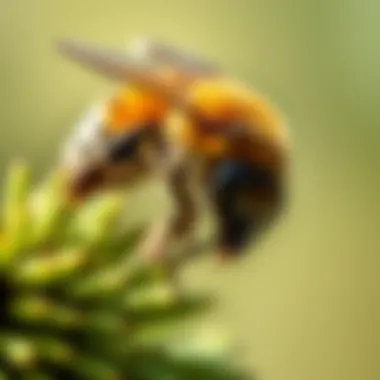
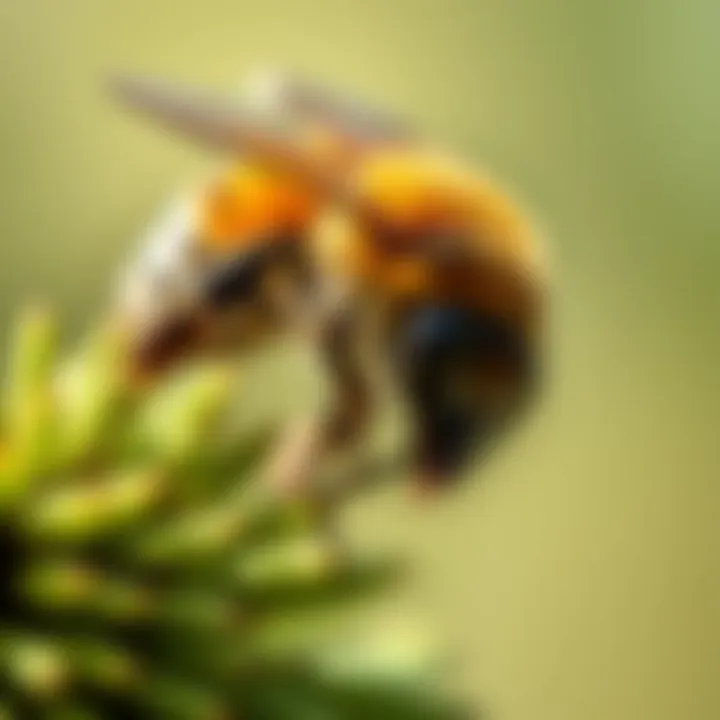
Intro
Dealing with bees in your shrubs can feel like trying to juggle while walking a tightrope. On one hand, these little pollinators play a vital role in our ecosystem, helping to maintain the balance of nature. On the other hand, having a bee colony in your garden can be nerve-wracking, especially for families with children or those who suffer from allergies. Understanding how to safely manage this situation is not just about keeping safe; it’s also about respecting these creatures that contribute so much to our environment.
In this discussion, we will dive into effective, humane techniques for removing bees from your shrubs and provide you with essential knowledge about these insects. This article aims to not only make your garden bee-friendly but also to empower you with the know-how to handle them responsibly without harming their populations.
To help you navigate this intricate subject, we will begin by examining the fundamental aspects of pests, focusing on the importance of correctly identifying the species at hand. Then, we’ll look at various prevention strategies to keep bees at bay, followed by eco-friendly solutions for removal when necessary. Throughout the piece, expert tips will be shared to guide homeowners and gardening enthusiasts alike.
Let’s begin by understanding our buzzing neighbors a little better.
Understanding the Importance of Bees
Bees play an essential role in our ecosystem, particularly in terms of pollination. Their industrious nature not only supports the growth of various plants but also maintains biodiversity within ecosystems. This section will address why understanding bees is fundamental, particularly when dealing with those residing in our gardens and shrubs.
Recognizing their significance isn't just for the bee enthusiasts or environmentalists. Any homeowner with a garden or outdoor area can gain substantial benefits from learning about these creatures. Without bees, many of our fruits, vegetables, and flowers would face significant declines, affecting food sources and natural beauty. By understanding the importance of bees, we can appreciate their role and the necessity of conserving them while addressing concerns about their presence.
The Ecological Role of Bees
Bees are nature's little workers, tirelessly flying from flower to flower, transferring pollen and ensuring that plants can reproduce. This service is vital for maintaining healthy ecosystems and supports the productivity of crops that we rely on for food. Without their efforts, the consequences could be dire. For instance, plants like almonds, apples, and blueberries depend heavily on bees for their pollination. In fact, some estimates suggest that bees contribute to over $15 billion worth of crops annually in just the United States alone.
Their contribution goes beyond agriculture as well. Bees also help in sustaining habitats for various wildlife species. By facilitating plant growth, they provide food and shelter for countless birds, insects, and other organisms.
Additionally, the by-products of bees, such as honey and beeswax, are valuable in culinary practices and for their medicinal properties. The intricate relationship between bees and plants showcases a delicate balance, and maintaining this is crucial for ecological health.
Identifying Beneficial and Problematic Bees
Not all bees are created equal when it comes to their interaction with humans or gardening activities. In general, two broad categories exist: beneficial bees and problematic bees. Beneficial bees, such as honeybees and bumblebees, play significant roles as pollinators. They’re often seen buzzing about, aiding in the pollination of fruits and flowers. On the other hand, some bees can become problematic. For instance, wasps, although technically not bees, can be aggressive and pose a threat during their search for sugar sources in built environments.
Identifying the differences is crucial for safe removal and coexistence. Homeowners should learn to distinguish benign species from those that might become a nuisance. Here are several tips to help:
- Look at the Size and Color: Beneficial bees tend to have furry bodies, while wasps may have smooth bodies.
- Observe Behavior: If the bee is buzzing gently around flowers, it’s likely harmless. Conversely, wasps might display more aggressive behavior.
- Consider Nest Locations: Honeybees often nest in hives, while solitary bees may create nests in the ground or wood.
In summary, understanding the ecological value of bees alongside recognizing the differences between the beneficial and problematic types empowers homeowners to approach bee management with knowledge and respect. This understanding opens the door to strategies for safe removal while adhering to both ecological and safety considerations.
Recognizing Bee Habitats in Bushes
Understanding where bees choose to make their homes is crucial for anyone looking to manage these vital creatures responsibly. Recognizing bee habitats in bushes helps homeowners minimize risks while appreciating the ecological benefits these pollinators provide. Allowing bees to flourish in their natural habitats can bolster garden health, promote biodiversity, and enhance the overall well-being of the community.
Common Bushes that Attract Bees
Certain types of shrubs are particularly inviting to bees. Some of these include:
- Lavender: With its aromatic flowers, lavender draws bees like moths to flame. Its fragrance not only appeals to humans but provides a rich nectar source for bees.
- Butterfly Bush (Buddleja): This shrub is a favorite among various pollinators, including bees. Its long flower spikes are like natural buffets, offering sustenance throughout the summer months.
- Corylus avellana (Common Hazelnut): This bush blooms early, providing essential food for bees just as spring emerges.
- Raspberry: Besides providing delectable fruits, raspberry bushes' blooms are a hot spot for bees, ensuring a fruitful harvest during the summer.
Identifying these and similar plants in your garden isn't just good practice; it fosters a welcoming environment for bees and harnesses their beneficial presence in your garden.
Signs of Bee Activity in Shrubs
Observing bee activity gives vital clues about the presence of bee habitats in your shrubs. Here are some key signs to look for:
- Increased Bee Traffic: Noticeable buzzing or a high number of bees flitting to and from the shrub indicates a hive or nest nearby.
- Flower Damage: Look for plants with nibbled leaves or fewer blossoms; this may suggest that bees are taking advantage of the floral offerings for sustenance.
- Honey Drips: If sticky residue is present on leaves, it could be a sign of bee activity. Honeydew, which comes from aphids attracted to your shrubs, might also indicate a thriving bee population nearby, as bees often feed on this sugary substance.
It’s essential to be observant and considerate when examining shrubs for signs of bee activity. They play a vital ecological role, and recognizing their habitats can assist in ensuring their safety while preventing any unwanted encounters.
Taking note of common bushes that attract bees and signs of their activity equips homeowners with valuable awareness. This knowledge not only helps in managing bee populations but fosters a stronger connection to the natural world that surrounds us, which ultimately contributes to a healthier environment.
Assessing the Need for Removal
Determining whether to remove bees from shrubs necessitates careful consideration and awareness of the developed habitat within your garden. Not every bee presence is problematic; in fact, many are crucial for pollination and maintaining your garden’s ecological balance. However, there are certain circumstances where removal may be essential. This section aims to clarify those situations, ensuring that you approach bee management with a blend of caution and care.
When to Consider Removal
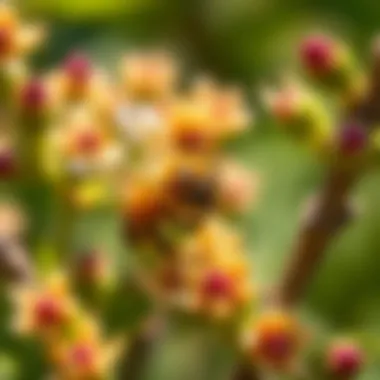
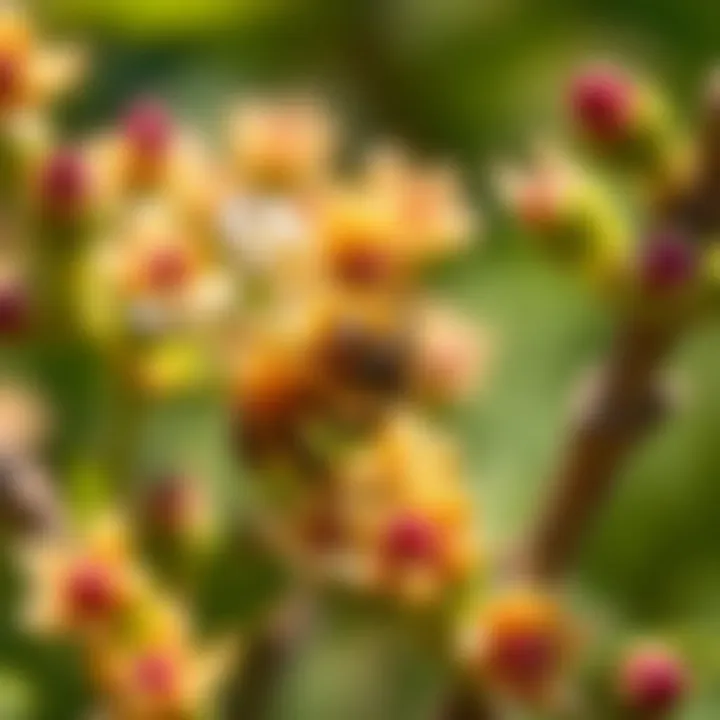
Identifying the right time to consider bee removal includes assessing the nature of their presence. Here are a few pointers:
- Aggressive Behavior: If you notice that the bees become aggressive when you or your pets are nearby, particularly if they are a species known for such tendencies, it may be prudent to think about removal.
- Proximity to High Traffic Areas: If bees are nesting in shrubs situated close to human activity zones, removal can help mitigate potential stings.
- Allergies and Health Risks: For individuals or pets prone to allergic reactions from bee stings, even a non-aggressive bee presence can pose risk.
- Invasion of Habitats: If bees are moving into areas that can disrupt other wildlife or gardening activities drastically, intervention may be necessary. In these cases, a thorough understanding of the species involved is vital.
Evaluating Risks to People and Pets
Safety concerns must take precedence when contemplating bee removal. Here are some factors to bear in mind:
- Awareness of Allergic Reactions: Many people may not know if they harbor a bee allergy until it’s too late. If someone in your household has a known allergy, the decision for removal becomes clearer.
- Children and Pets: Young children and pets are naturally curious, often approaching bees without caution. Their presence increases the likelihood of stings occurring, making it essential to evaluate the potential risks.
- Frequent Visitors: If your home sees a lot of guests, some of whom might not be aware of the bees in your shrubs, clearing the area can help maintain a safer environment.
In summary, assessing the need for removing bees from shrubs is more than a simple instinct—it's a layered decision based on the welfare of both your loved ones and the bees. Every action should stem from a place of understanding, prioritizing eco-friendliness and personal safety. Where needed, you can engage with professionals, ensuring the methods used resonate both with conservation efforts and the safety of those nearby.
"Remember, knowledge is your first line of defense when dealing with bees. Understanding their habits and potential impacts will guide you towards the best decision for your garden and those who enjoy it."
Relevant Resources
- Learn more about bee behavior
- Bee management guidelines
- Community discussions on bee safety
- Guidelines from the EPA
By taking these aspects into consideration, you create a well-rounded perspective on whether immediate action is necessary regarding the bees inhabiting your shrubs.
Humane Removal Techniques
When it comes to managing bees, especially in domestic spaces, the concept of humane removal techniques cannot be overstated. Bees play an essential role in our ecosystems, providing critical pollination services. Therefore, the need to approach the removal process with care is imperative. Humane removal focuses on minimizing harm to the bees while addressing any concerns homeowners may have regarding safety.
This segment discusses various humane techniques, shedding light on their significance, effectiveness, and the benefits they offer.
Non-Invasive Methods
Non-invasive methods rely on strategies that do not harm the bee population. One effective technique is simply waiting for the bees to naturally vacate the area. Often, bees establish temporary nests during their foraging periods. This method is particularly applicable during late summer to early fall when many species are preparing for the cooler months ahead.
Another approach is to create a distraction. This could involve using certain scents that bees find unappealing, thereby steering them away from the shrub or bush in question. For instance, some gardeners have found that citrus oil can repel bees effectively. A thorough application around the area may encourage the bees to find a new location. It’s imperative to ensure that any repellents are safe and do not harm the environmental balance.
Here are a few additional non-invasive techniques:
- Natural barriers: Planting flowers or shrubs that are unattractive to bees nearby.
- Timing interventions: Attempting removal during cooler parts of the day when bees are less active.
Using Natural Deterrents
Natural deterrents offer an eco-friendly avenue for managing bee populations. This practice not only minimizes the risk of stings but also preserves the health of local bee populations. Beyond citrus oil, peppermint, or vinegar-based sprays have proven useful in creating barriers. These sprays can be applied in areas where bees are particularly active.
Insects, including bees, are sensitive to strong smells. Utilizing this fact, many choose to apply substances such as garlic or eucalyptus oil, which are known to shoo bees away without causing them harm. Homeowners should mix these oils with water for application and use caution upon application to ensure neighboring flora remains unharmed.
Be sure to:
- Conduct a patch test to avoid any adverse reactions on nearby plants.
- Apply during late evening or early morning when bees are less likely to become active.
Consulting Professionals
When uncertain about handling the situation, consulting a professional is often the most prudent choice. Beekeepers and pest control experts with experience in humane removal can provide significant help. These professionals not only recognize which species are present but also adopt tried-and-true techniques for relocating bees safely.
A qualified expert can assess the bee colony's health, identify if the species is endangered or beneficial, and determine the best humane approach to minimize distress—both for the bees and the homeowners.
By collaborating with experts, homeowners can also learn more about incorporating bee-friendly practices in the future, fostering coexistence rather than conflict.
"In seeking humane solutions, we ensure the well-being of our buzzing friends while creating safer spaces for ourselves."
Additionally, local beekeeping associations and organizations, often listed on websites like ebee or nationalbeekeepers.org, can provide resources or volunteers willing to assist in the safe removal of bee populations.
By emphasizing humane techniques, not only do we preserve bee populations but we also reinforce our commitment to ecological balance and sustainability.
DIY Techniques for Safe Removal
Managing bees nestled in shrubs can seem tricky, but various do-it-yourself techniques make it feasible for homeowners. These techniques not only foster a harmonious environment but also provide a sense of accomplishment. Familiarity with the process paves the way for safe removal without causing harm to the bees or interfering drastically with the ecosystem.
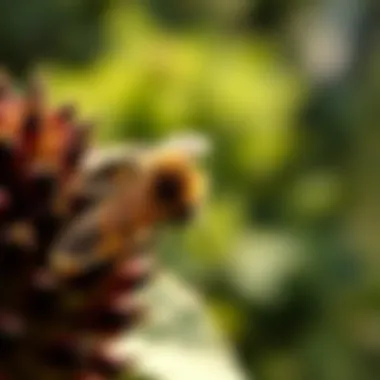
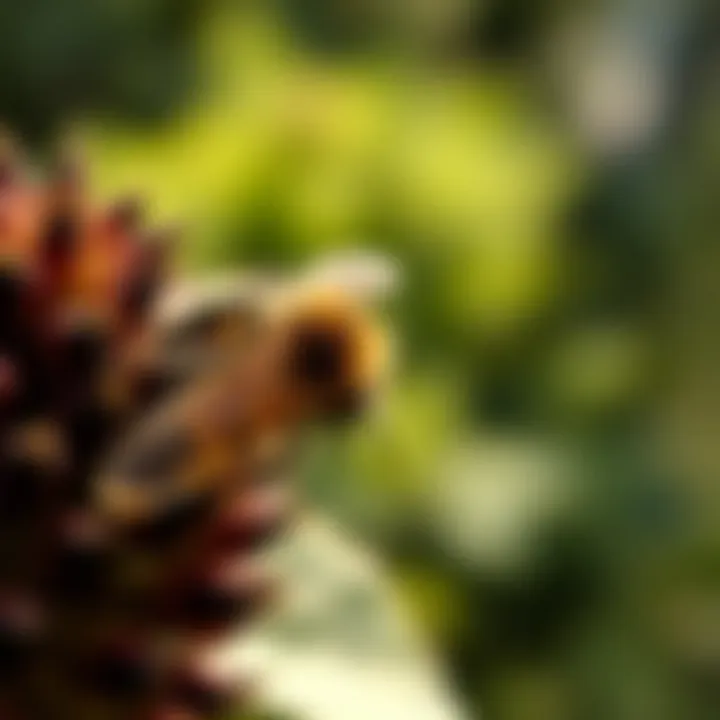
Timing and Preparation for Removal
Timing plays a crucial role when planning for removal. Ideally, early morning or late evening are the best times to approach the task, as bees tend to be less active during these hours. Shifting light conditions encourage a calm environment, which is essential for both the bees and yourself.
Preparing mentally is equally significant. Before attempting the removal, gather knowledge on bee behavior. Understanding that bees are generally non-aggressive if left unprovoked can lessen anxiety. If possible, have a friend assist you. Teamwork can ease the task and ensure safety. It’s wise to review your garden’s layout, making note of potential escape routes for the bees.
Equipment Needed for Safe Extraction
Equipping yourself properly is vital for an efficient removal.
- Protective Gear: A bee suit or thick clothing serves as your first line of defense. Ensure that all skin is covered, paying special attention to wrists and neck.
- Smoker: This tool assists by calming bees. A few puffs of smoke can inhibit their defense mechanism, aiding the removal process.
- A Soft Brush: A brush allows gentle nudging of bees away from the area you want to clear. Avoid swift motions to reduce agitation.
- Container for Relocation: Use a cardboard box or bee-safe container to gather the bees. This container should be well-ventilated to allow the bees to breathe.
- Bait: Sweet substances like sugar water can help entice bees into the container.
Having these items ready will make your DIY experience smoother.
Step-by-Step Removal Process
Once equipped and prepared, here’s a straightforward guide to effectively and humanely remove bees:
- Gear Up: Dress in your protective clothing before approaching the shrub.
- Inspect the Nest: Identify the bees’ entrance and exit points. Observe their behavior to determine how they react when you come close.
- Smoke the Area: Light your smoker, ensuring it produces cool smoke, not hot. Puff this smoke around the nest to ease bees’ anxiety.
- Use the Brush: While being calm, gently use the soft brush to guide bees into the container. Move slowly and methodically; quick movements can provoke their sting reflex.
- Bait the Container: Drip a bit of sugar water inside the container to attract strays.
- Seal and Relocate: Once the container is adequately filled, seal it carefully. Relocate to a safe distance from your home, ideally at least five miles away, where they can establish a new habitat.
- Monitor the Area: After removal, keep an eye on the shrub for a few days. If any colonies return, they might have been missed in the initial process.
Following these steps will help ensure that the removal aligns with both safety and ecological balance, letting you manage your garden without extensive disruption.
"The bees are a vital part of our ecosystem and should be treated with care during removal processes."
Remaining mindful of the gradual and humane removal of bees not only aids in their survival but fosters a respectful relationship with nature in your surroundings.
For more detailed information, visit:
Post-Removal Considerations
After safely removing bees from your shrubs, as the saying goes, "out of sight, out of mind" does not apply here. It is crucial to reflect on your garden's state and implement strategies to prevent future problems. Here’s why it's necessary to look back and assess, along with how to do so effectively.
Assessing the Bush After Removal
Once the bees have vacated the premises, checking the shrub for damage becomes a top priority. Bees not only create hives but might leave behind some chaos too, and addressing these issues can save you plenty of heartache down the line. First, check for physical damage to the plant. Look for any wilting leaves or signs of infestation left behind, such as debris or bee excrement. It's not just about being tidy; ensuring the health of the shrub enables it to thrive.
Moreover, this is a good point to evaluate if the removal affected the ecosystem surrounding the bush. Bees play a vital role—you might’ve removed a swarm but also disrupted a little slice of nature's intricate web. Note if there are any adjacent flowers that may now need encouragement to help pollinate, compensating for the bees’ absence.
Preventing Future Invasions
Prevention is undoubtedly better than cure. After you have taken your time to clean up and assess, sit down to formulate a plan that keeps future bee interlopers at bay. One solution is to consider what types of plants you are cultivating. Some shrubs are bee magnets, while others are much less enticing. For example, if you want to keep the bees away, you might lean towards planting non-flowering varieties, as they tend to be less appealing to bees.
A few other tactics include:
- Regularly Inspecting Your Garden: Keeping a close eye on your plants helps catch early signs of bee activity.
- Utilizing Barriers: Physical barriers like fine mesh can deter bees from accessing your shrubs while still allowing sunlight and rain to nurture them.
- Natural Deterrents: Some essential oils, like peppermint, can serve as effective bee repellents, a simple yet effective method to keep the buzzing at a distance.
- Engaging Local Experts: If the problem persists year after year, consider collaborating with local beekeepers or pest management specialists. They often have insights into your local ecosystem that can help manage bee populations intelligently.
In summary, post-removal reflections are a significant aspect of maintaining harmony between your garden and the buzzing visitors it sometimes attracts. Whether it’s inspecting damages or implementing proactive strategies, taking these steps can save you both frustration and ensure your garden stays a serene space.
Being attentive does not stop at removal; it's about nurturing the delicate balance in your backyard.
For more information, check Wikipedia on Bees or Biodiversity in Gardens on how to manage this balance effectively.
Safeguarding Against Stings
When dealing with bees in your garden, safeguarding against stings is not just a precaution; it’s essential. Understanding how to protect both yourself and your loved ones is key when managing or removing bees from shrubs. The first line of defense is awareness of bee behavior and the best practices in case interactions escalate into stinging incidents.
Recognizing Common Bee Behavior
Understanding the behavior of bees helps in assessing risk levels. Generally, bees are not aggressive unless provoked. Here are several key points to keep in mind:
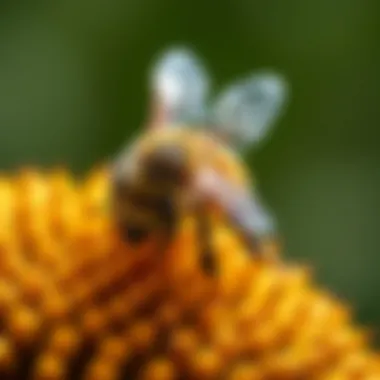
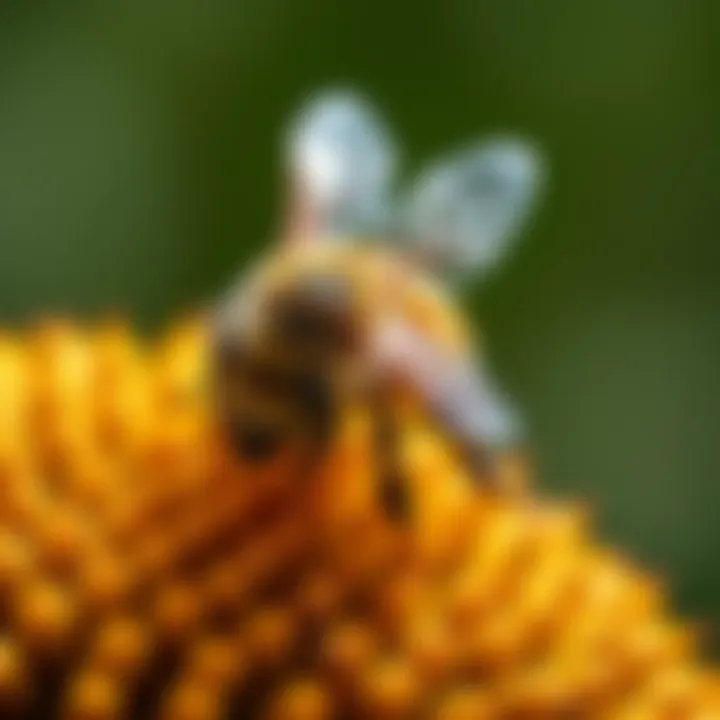
- Flight Patterns: Observe their flight. Bees often have a predictable pattern as they move from flower to flower, usually within a small area. If they’re buzzing around, they might be guarding their hive.
- Pheromone Signals: Bees communicate through pheromones, which can indicate distress. If a bee feels threatened, it releases a scent that may cause other bees to react defensively.
- Time of Day: Bees are typically most active during sunny days and cooler times of the year. It's best to avoid removal attempts during these periods to minimize the chances of provoking them.
- Breeding Seasons: Know that certain times of the year, like spring and summer, can cause increased bee activity due to their natural reproductive cycles. Take extra caution during these months.
Understanding these behaviors is a sturdy foundation for anyone looking to avoid stings while managing bee presence in their yards.
First Aid for Bee Stings
Even with precautions, stings can happen. Here’s how to handle them effectively:
- Remove the Stinger Quickly: If stung, the first step is to remove the stinger from the skin. Use a flat object like a credit card to scrape it out. Avoid pinching it, as this can squeeze more venom into the wound.
- Wash the Area: Clean the sting site with soap and water to prevent infection.
- Cold Compress: Applying a cold compress reduces swelling and alleviates pain. A pack of ice wrapped in a cloth works fine.
- Medication: Over-the-counter pain relievers like ibuprofen or acetaminophen can help manage pain and inflammation. Antihistamines may reduce itching and swelling.
- Monitor for Allergic Reactions: Keep an eye on symptoms. Look for difficulty breathing, swelling of the face, or dizziness. If any of these occur, seek medical attention immediately.
"Staying informed about bee behavior and having a first aid strategy is a solid plan for anyone who enjoys gardening. Knowing how to react can turn a sting into a mere irritation instead of something more serious."
In Summary:
It makes sense to prepare before you face bees head-on. Recognizing their behaviors and being equipped with a solid first aid game plan can significantly help in safeguarding against stings. Further, fostering respect for these critical pollinators is essential for a harmonious garden.
For more information on bee behavior, check National Geographic.
Also consider visiting community forums on Reddit for shared experiences and tips on bee safety and management.
Ecological Perspectives on Bee Management
To grasp the full scope of bee management, it's vital to understand the ecological implications surrounding these remarkable insects. Bees play an essential role in the environment, specifically in the realm of pollination. Without them, many of the plants we rely on for food, beauty, and ecological balance would suffer. In this section, we will explore common misconceptions regarding bees and the broader impacts of their removal on biodiversity.
Common Misconceptions about Bees
Often, people associate bees solely with aggression and stings, leading to fear and mismanagement. It's important to dismantle these myths. For instance, did you know that not all bees sting? Bumblebees are among the most gentle varieties, rarely stinging unless threatened. Additionally, many homeowners may mistakenly classify all buzzing insects as bees. In fact, wasps and hornets are often mistaken for honeybees, provoking unnecessary panic.
Moreover, the image of the bee as a mindless pest is skewed. Bees exhibit remarkable behaviors, such as communication through dances and sophisticated hive organization. These insights into their social structures highlight bees not just as creatures of annoyance but as integral players in our ecosystems. By recognizing and understanding their behaviors, we can shift our approach from removal to coexistence.
The Impact of Bee Removal on Biodiversity
Removing bees from their environments can have profound consequences that ripple through the ecosystem. When bees are displaced, pollination networks become disrupted, impacting plant reproduction. A simple chain reaction can occur: fewer flowers can lead to reduced food sources for other wildlife, causing imbalances in entire habitats.
Specifically, research shows that certain plants rely almost exclusively on specific bee species for pollination. If these bees are removed, those plants can struggle to reproduce, which in turn affects animals that depend on those plants for survival. The loss of one species can subtly shift an entire ecosystem, leading to either an increase in invasive species or a decline in biodiversity. These effects can take years or even decades to fully materialize, making early intervention crucial.
"Removing bees haphazardly is akin to pulling a single thread from a tapestry—one rip can unravel the entire design."
Recognizing these dynamics emphasizes the importance of careful management strategies. Instead of viewing bee removal as a quick fix, we should explore options that allow us to coexist with these vital pollinators.
Understanding the ecological perspectives on bee management not only increases our awareness of their importance but also propels us toward more sustainable solutions. By addressing misconceptions and acknowledging the impacts of removal, homeowners can foster healthier environments for both their gardens and the broader ecosystems at large.
Resources for Further Information
Gathering knowledge on safely removing bees from shrubs is crucial, especially for homeowners and gardening enthusiasts. This wealth of information can shed light on the intricacies of managing bee populations while ensuring safety for both the bees and humans. Resources encompass not only scientific literature but also community insights and practical guides. With the right information in hand, individuals can make informed decisions about their gardens and interactions with these important pollinators.
Books on Beekeeping and Pest Management
Books provide a foundational understanding for anyone looking to delve deeper into the world of bees and their management. Titles such as "The Beekeeper's Bible" and "Bees: A Natural History" offer in-depth insights into bee behaviors, life cycles, and their vital roles in our ecosystem. There are also guides like "Pest Management for the Home Gardener" that focus on identifying pests and managing them effectively without harming beneficial insects.
Reading materials can cover a variety of topics:
- Bee Species Identification: Understanding different bee types helps distinguish between beneficial bees and nuisances.
- Behavioral Patterns: Knowing when bees are most active informs better timing for removal activities.
- Eco-Friendly Practices: Many books emphasize sustainable methods for pest control that can benefit the environment.
In addition, many books offer step-by-step instructions for various management techniques, making them indispensable resources for practical approaches in the garden.
Online Resources and Communities
In the digital age, online resources and communities become essential tools for homeowners seeking information about bee management. Websites such as Beesource.com and the Xerces Society provide comprehensive information about bee conservation and best practices for dealing with bees in gardens. Well-curated forums on platforms like Reddit and Facebook groups dedicated to gardening can also foster community support and share personal experiences.
Some key elements of these resources include:
- Discussion Boards: Engaging with others who have faced similar challenges can yield practical advice and emotional support.
- Tutorials and Videos: Many online resources feature visual guides that can demonstrate techniques for bee removal, making the process easier to follow.
- Current Research and Studies: Staying updated with the latest findings on bee populations and management helps reinforce effective practices.
Utilizing these resources allows individuals to tap into a vast pool of knowledge, offering both theoretical knowledge and hands-on guidance.
"Knowledge is power; understanding bees and their role enhances our gardening experience and supports our environment."
Engaging with both books and online platforms leads to more informed decisions regarding bee management, ensuring a harmonious coexistence with these essential pollinators.



